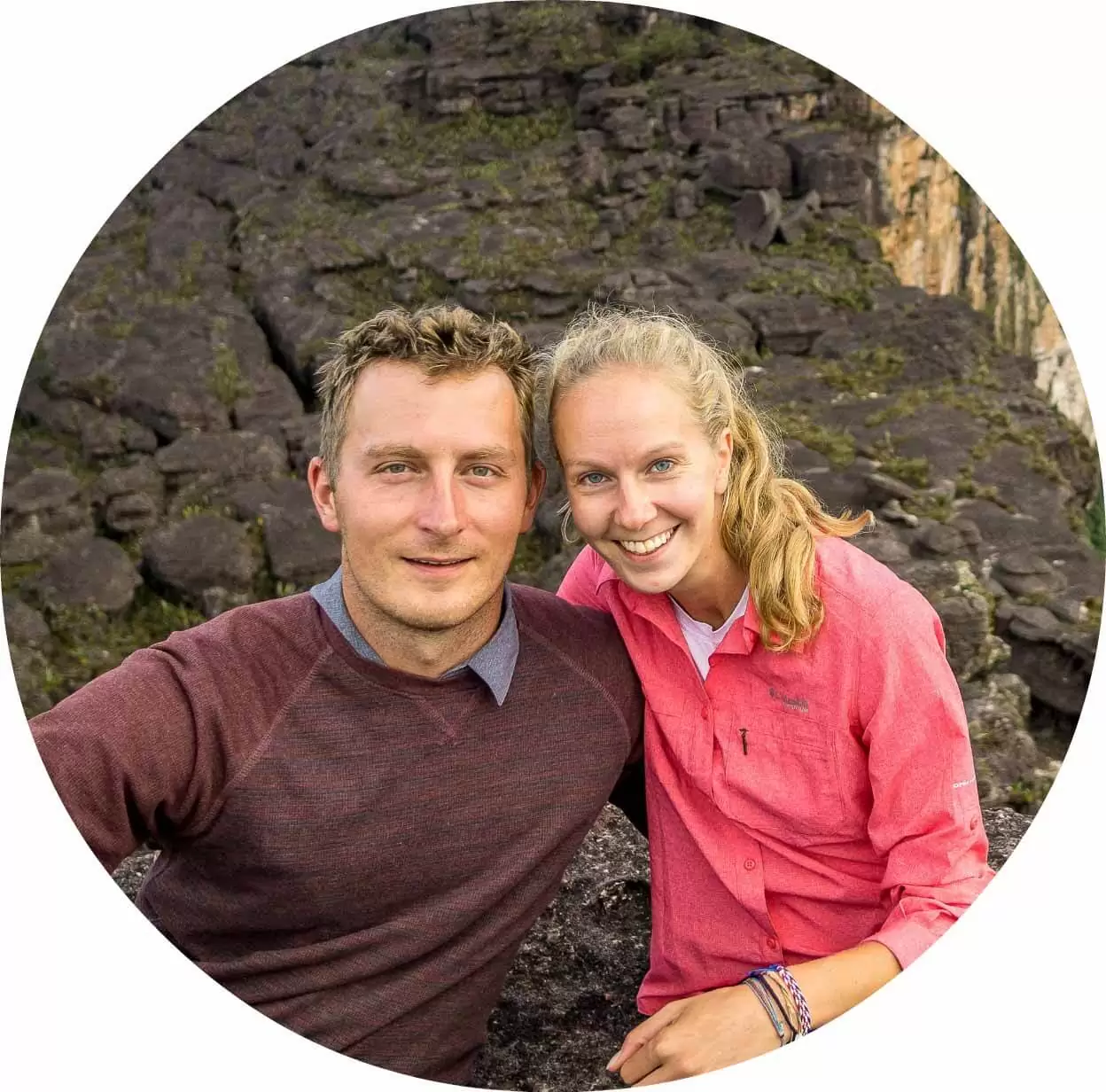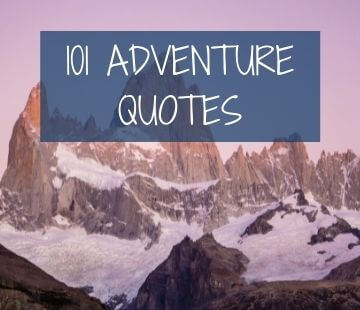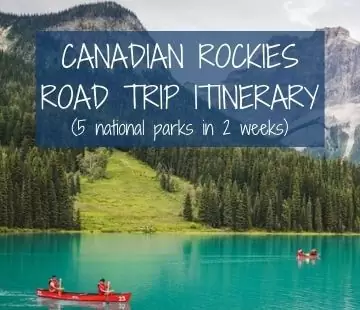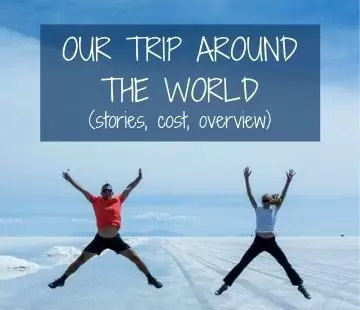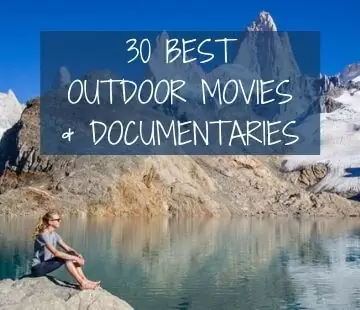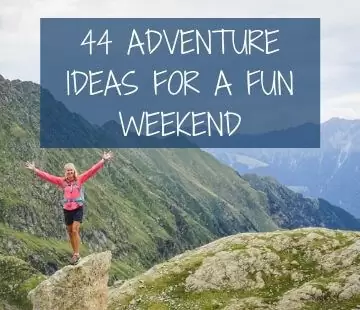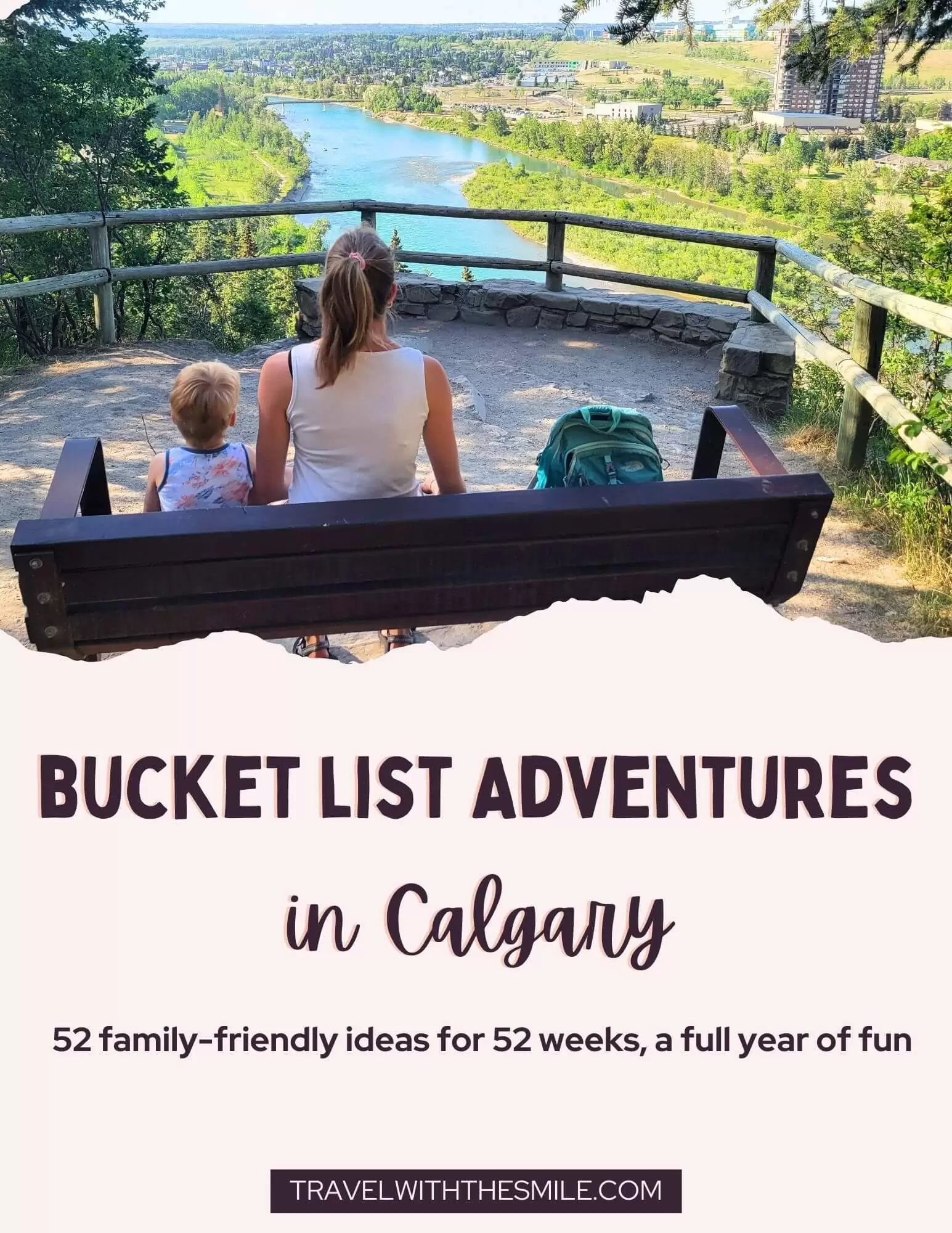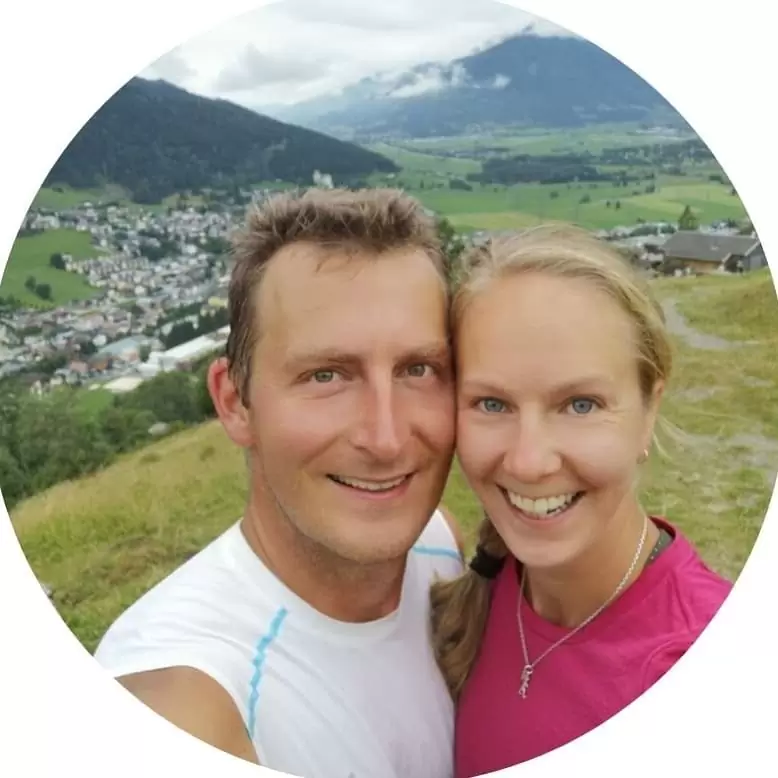Takakkaw Falls in Yoho National Park is the most beautiful waterfall in the Canadian Rockies! It’s easily accessible and should be on everyone’s bucket list for the Rockies.
Takakkaw Falls is the 2nd highest waterfall in Canada after Della Falls on Vancouver Island (which is hard to get to). But visiting Takakkaw Falls couldn’t be any easier. You drive the scenic road to a parking lot and take a short walk.
We’ve visited Takakkaw Falls many times, and it still keeps me in awe. It’s incredible how such an easy walk gives you a great reward. And you can even get close enough for a refreshing spray.
Whether you’re visiting Banff or Jasper National Park, I highly recommend putting their neighbour Yoho National Park on your Canadian Rockies itinerary. Yoho National Park is an underrated destination and provides a welcome quiet break from its busy neighbours.

This blog post includes all info about Takakkaw Falls, including tips for visiting (when the road to the falls opens!), hikes in the area, nearby accommodation options for camping & hotels, a hiking packing list, hiking tips, and additional tips about Yoho National Park & beyond!
MORE TIPS
Read our comprehensive Adventure travel guide to Yoho National Park for more activities and tips for visiting.
*In the spirit of full disclosure: This post may contain affiliate links, which means that if you purchase through them, we receive a small commission at no extra cost to you. See more details here. We appreciate your support!
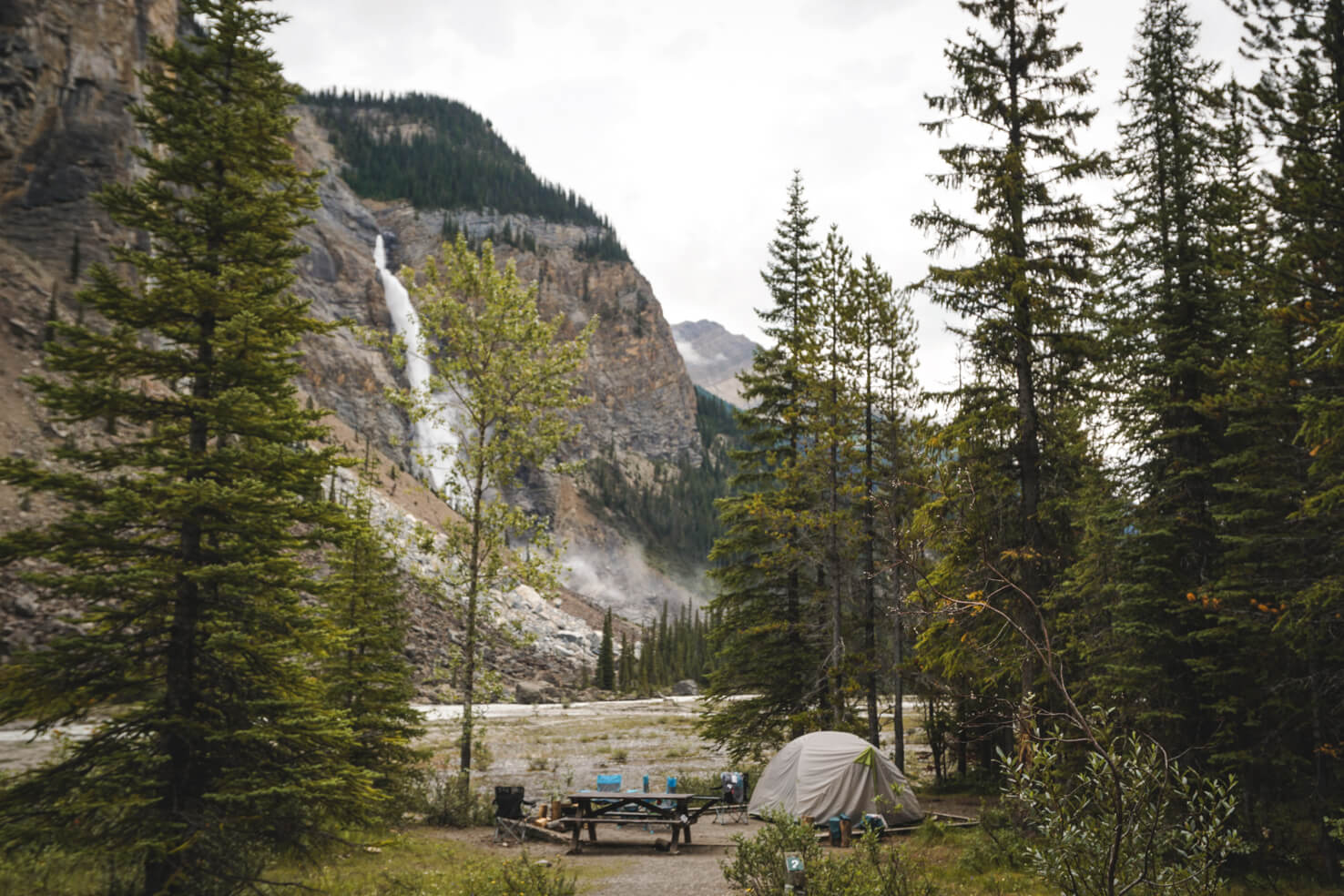
Pros & cons of visiting Takakkaw Falls
Pros:
- It’s the 2nd highest waterfall in Canada at 373 meters
- Easy partly paved walk to the falls
- Wheelchair and stroller-friendly trail
- Option for a refreshing spray right under the falls
- Campsites with Takakkaw Falls views
- It’s close to Lake Louise in Banff and Golden in British Columbia
- Picnic tables with views of Takakkaw Falls
- Many hiking options close by
- Close by campgrounds & hotels to stay while visiting
- More stunning attractions in the area
Cons:
- No amenities close by (it’s also a good thing because you’re only surrounded by nature)
How to get to Takakkaw Falls
Takakkaw Falls is in Yoho National Park in British Columbia (close to Alberta/British Columbia border). It’s 50 km west of Lake Louise, 20 km northeast of Field, and 75 km east of Golden.
From Trans-Canada Highway, follow the Takakkaw Falls sign. Once you’re driving on Yoho Valley Road, you’re only 15 km from the Takakkaw Falls parking lot.
Yoho Valley Road is a beautiful scenic drive with glacier and mountain views. It’s also narrow and steep, with two sharp switchbacks. Therefore large RVs are not permitted on Yoho Valley Road. If you have an RV or a big trailer, park it by the Monarch Campground at the beginning of Yoho Valley Road.

Once on Yoho Valley Road, you pass Monarch Campground, Kicking Horse Campground, and then Meeting of the Waters – merging Yoho River and Kicking Horse River. The milky coloured is Yoho River, and the turquoise one is Kicking Horse River. As they meet, they create a new colour and big rapids, which is stunning to watch.
Takakkaw Falls from Lake Louise
If you’re travelling from Lake Louise, the drive to Takakkaw Falls takes about 40 minutes. You drive on Trans-Canada Highway for 24 km until you see a sign for the falls.
The Yoho Valley Road is about 15 km long and can take 15 minutes to 1 hour, depending on how often you’d like to stop to enjoy the gorgeous views.
Before you reach the Takakkaw Falls parking lot, you will see the falls on your right.

Takakkaw Falls from Field & Golden
Town of Field is about 20 min drive away, and Golden is about an hour away. The drive is pretty straightforward, once again on Trans-Canada Highway heading east until you reach the Takakkaw Falls and Yoho Valley Road sign.
IMPORTANT NOTE: Yoho Valley Road leading to Takakkaw Falls is only accessible from the end of June till mid-October, and the dates vary each year depending on the snowfall. Since the road passes an avalanche zone, it’s closed during winter (same as Moraine Lake in Banff). Check here for opening dates.
Fun facts about Takakkaw Falls
- Takakkaw Falls is the 2nd highest waterfall in Canada at 373 meters. The waterfall has two drops, with the higher/main drop at 254 meters. That’s the drop you see when standing close to the falls.
- Takakkaw Falls are the most popular falls in Western Canada. If you want to have them to yourself, arrive early morning mid-week in September. We had such luck several times.
- Yoho in the Cree language means “awe” and Takakkaw means “magnificent”. The names couldn’t be any more perfect!
- Locals call it Tak Falls, but I prefer the original name Takakkaw Falls out of respect for the indigenous language.

Takakkaw Falls Hike/Walk
- Distance: 1.4 km out and back
- Elevation gain: 35 m
- Difficulty: easy
- Best time to go: July to September (the road to Takakkaw Falls is open end of June till mid-October)
- Gear: water bottle with filter (you can fill up water under the waterfalls), waterproof jacket if you’re afraid of water, but I highly recommend getting sprayed on, running/hiking shoes, bear spray (map is not needed as the trail is well trodden)
- Waterfall stats: 373 meters high & 46 meters wide
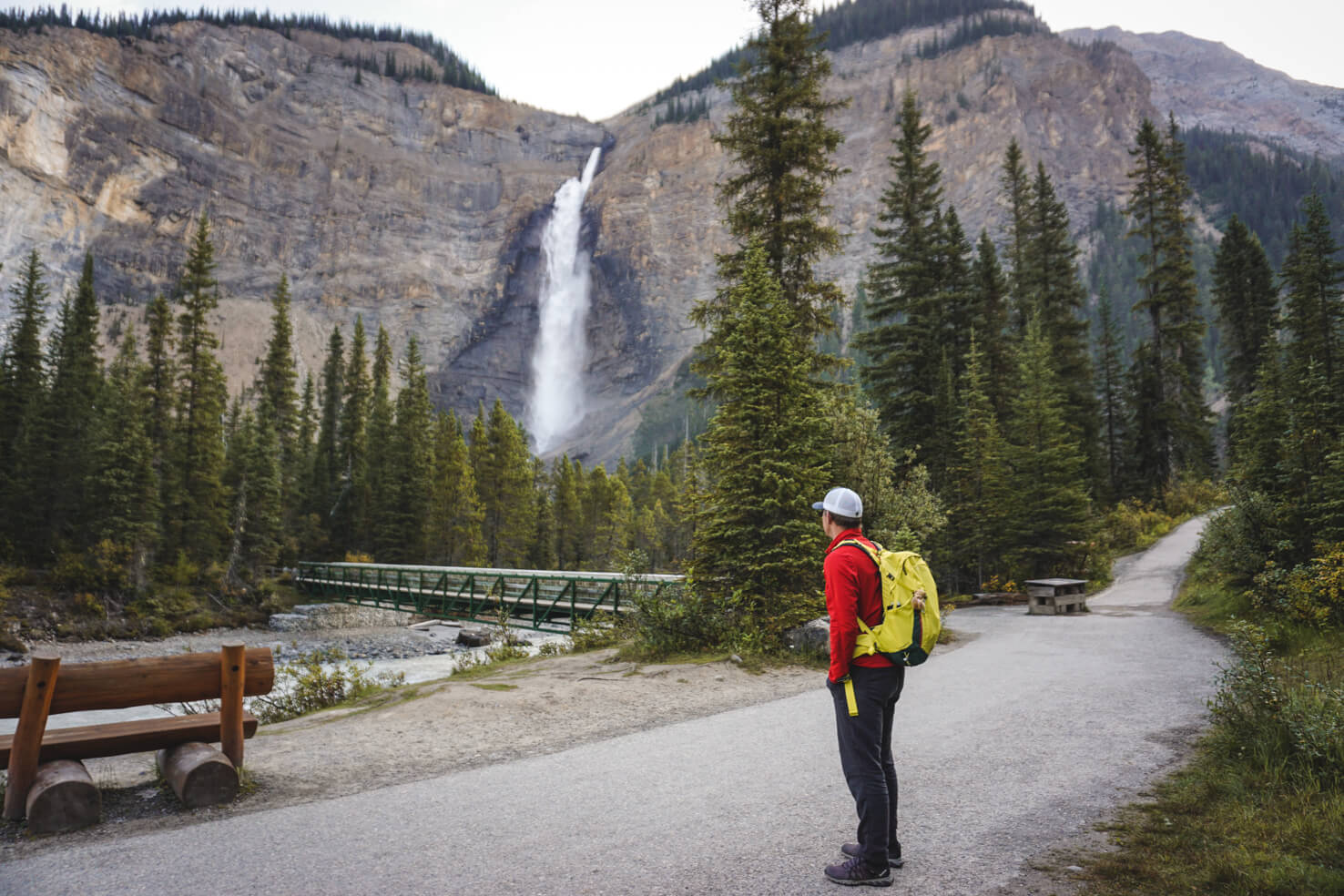
Let me start by saying that the Takakkaw Falls hike is a walk, not a hike. Even though technically, because of the tiny elevation gain, it might be called a hike, it’s not. You will understand when you visit.
Anyone can do this! I’ve seen elderly, little kids, wheelchairs, and strollers on the trail, and all were moving smoothly.
Once you arrive at the Takakkaw Falls parking lot, you can immediately see the falls. From here, it only gets better as you get closer.

The trail to Takakkaw Falls starts on a paved wide path. You pass outhouses in the beginning, a big sign informing you of all the hikes in the area, and several picnic tables with a view of Takakkaw Falls. While there are signs, you’re going in the right direction as long as you walk toward the waterfalls.
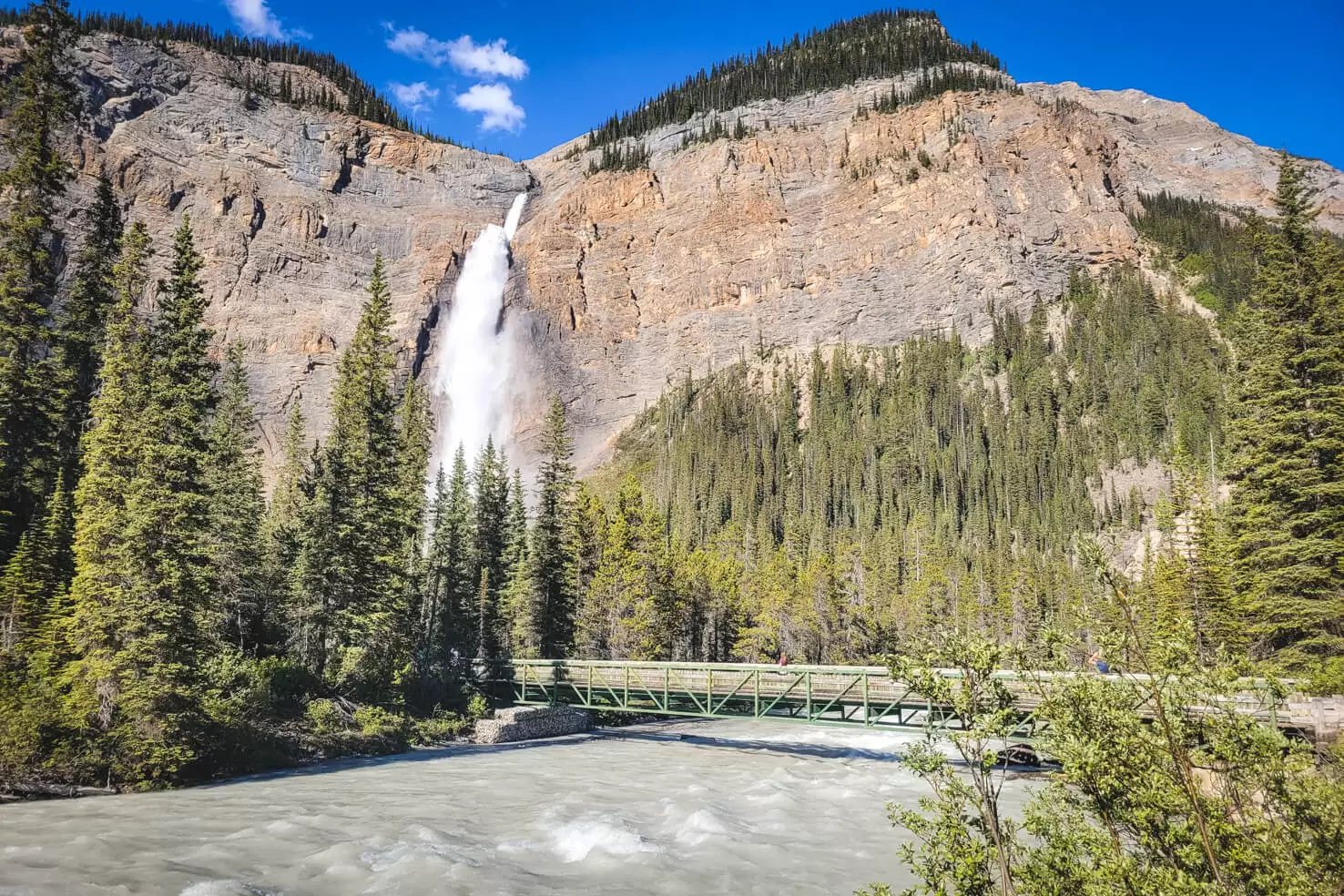
Shortly you cross a short bridge over the Yoho River. As mentioned previously, the Yoho River is milky. You can walk down the creek and wash your feet or arms. When the water dries, it leaves a dusty film on your skin; those are the particles from Yoho Glacier.

Because Takakkaw Falls is fed by the Daly Glacier above, which is part of the even bigger Waputik Icefield, the water coming from the waterfalls is very cold and amazingly refreshing if you get sprayed on.
You can continue on the main trail as far as you’re comfortable with the mist and spray from the falls. Even though the trail to Takakkaw Falls is 700 meters long, hardly anyone makes it to the end because of the intense spray. This is where I would recommend wearing a poncho or rain jacket if you don’t want to get wet, but what’s fun about that?
If visiting the Rockies is your dream trip and a once-in-a-lifetime opportunity, I say enjoy it to the fullest and get sprayed on by the 2nd highest waterfall in Canada. You won’t remember wearing a jacket to stay safe, you will remember getting outside your comfort zone, get soaked by an amazing waterfall and drying on your way back to the car. Those are the memories you will look back at with a smile.
Once you enjoy Takakkaw Falls and head back to the parking lot, take a tiny detour for a fantastic photo opportunity. After crossing the bridge, turn left (as opposed to the right to the parking lot), and you will see the famous red chairs where you can sit and enjoy Takakkaw Falls a bit longer.
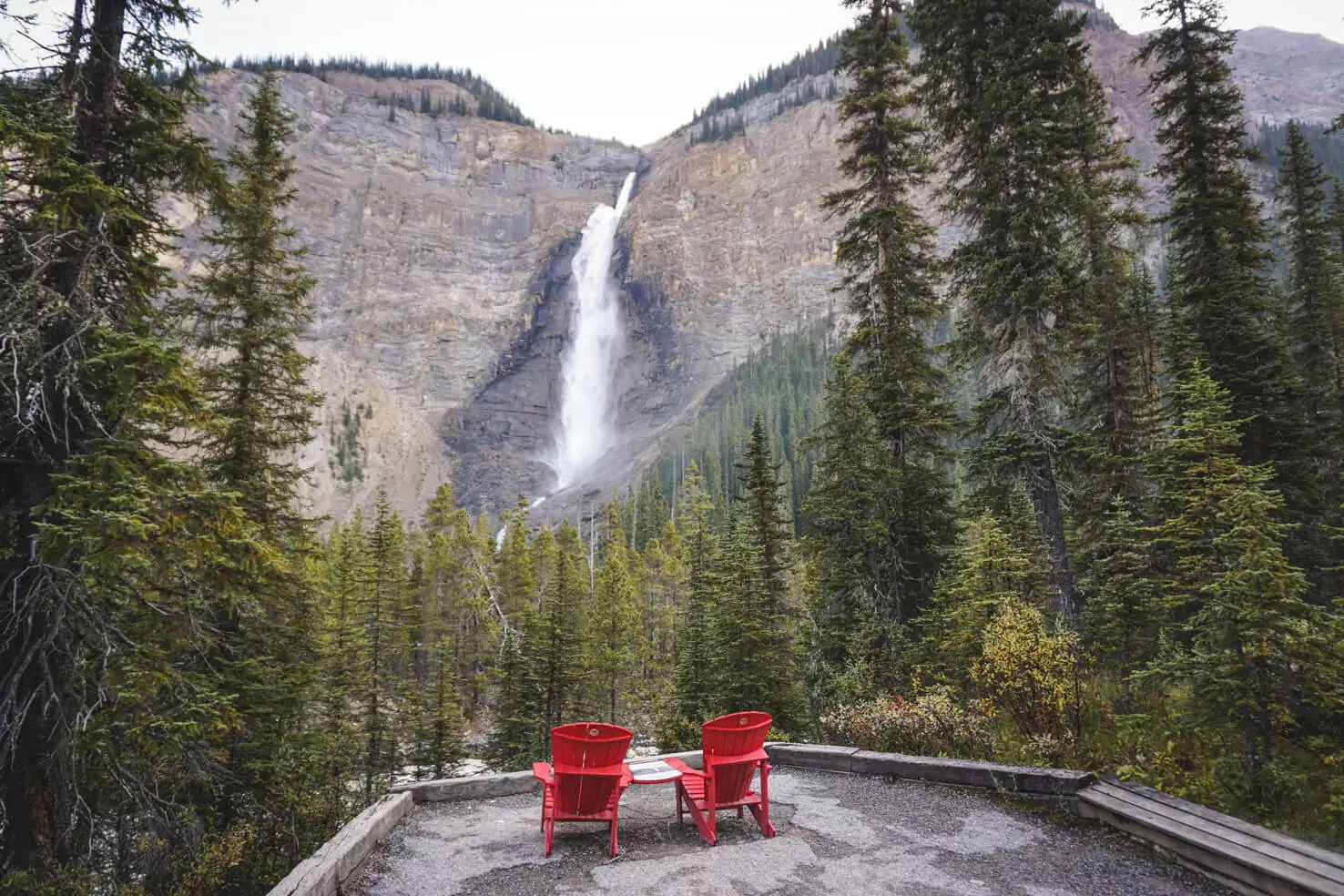
If you’re renting our Smile Campervan, you can cook a meal at the parking lot and enjoy it at nearby picnic tables with a view of Takakkaw Falls.

You can see almost the whole waterfall in all its beauty from the trail, but if you’re craving more, continue reading or skip to ‘Things to do near Takakkaw Falls’ where I go into detail about the most amazing view of the waterfall.
And lastly, if you don’t have a picnic with you, I highly recommend fuelling up at Truffle Pigs Bistro in Field. We always eat here whenever we visit Yoho National Park. Their bistro & lodge are fantastic. I often get the Purple Burger with beets patty; it’s so delicious!
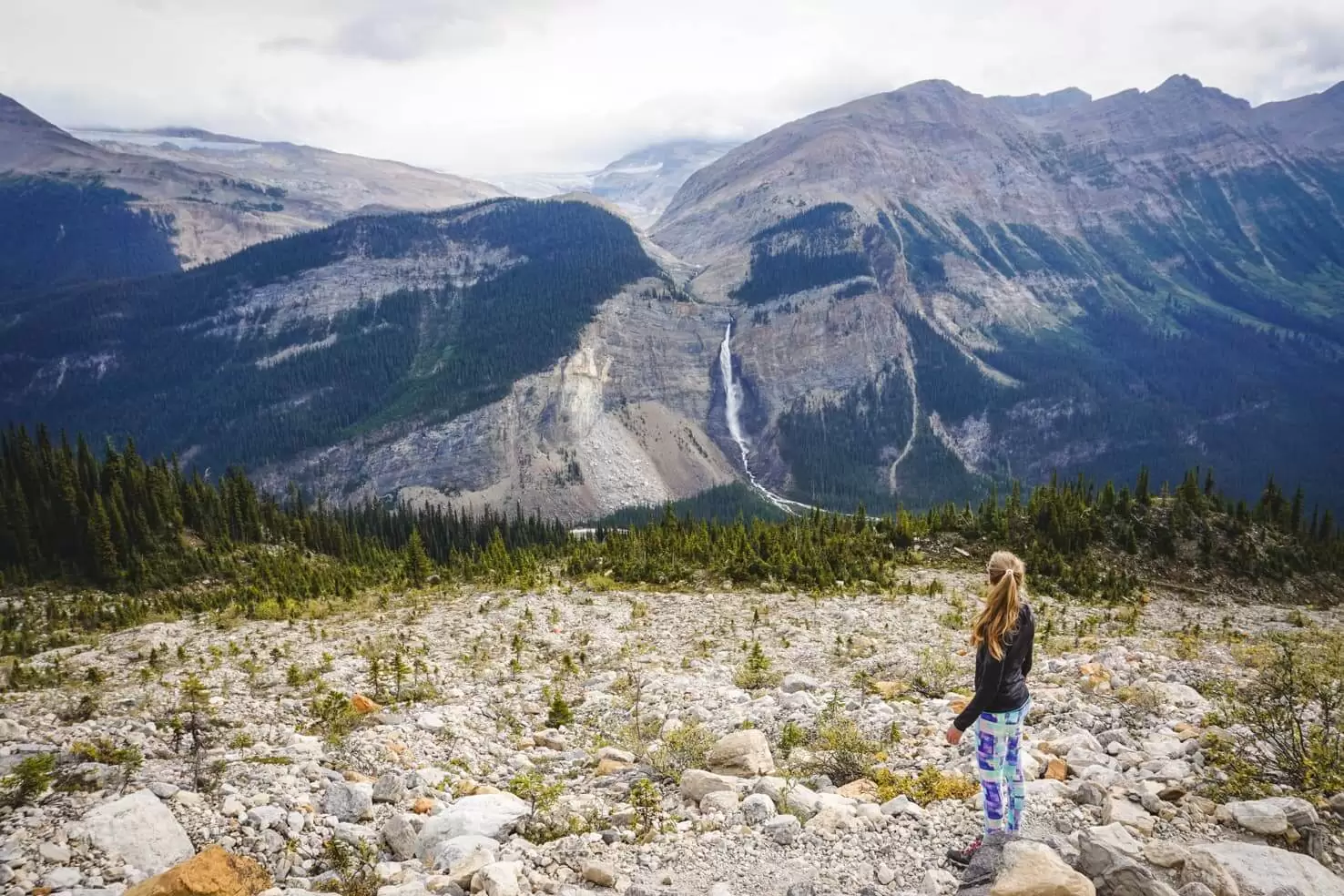
Camping at Takakkaw Falls & Yoho National Park
We always recommend staying in the campgrounds to have the most freedom and enjoy nature to the fullest while staying on a budget. Check out our Smile Campervans, your home on wheels in the Canadian Rockies.
- Takakkaw Falls Campground
Takakkaw Falls Campground is the best campground in Yoho National Park. It’s a walk-in campsite with a view of the 2nd tallest waterfall in Canada. It’s open from June 15 to October 9 for a fee of 18.75 CAD/night. Only tents are allowed (parking is about 500 meters from the campground, with trolleys available to carry your gear).
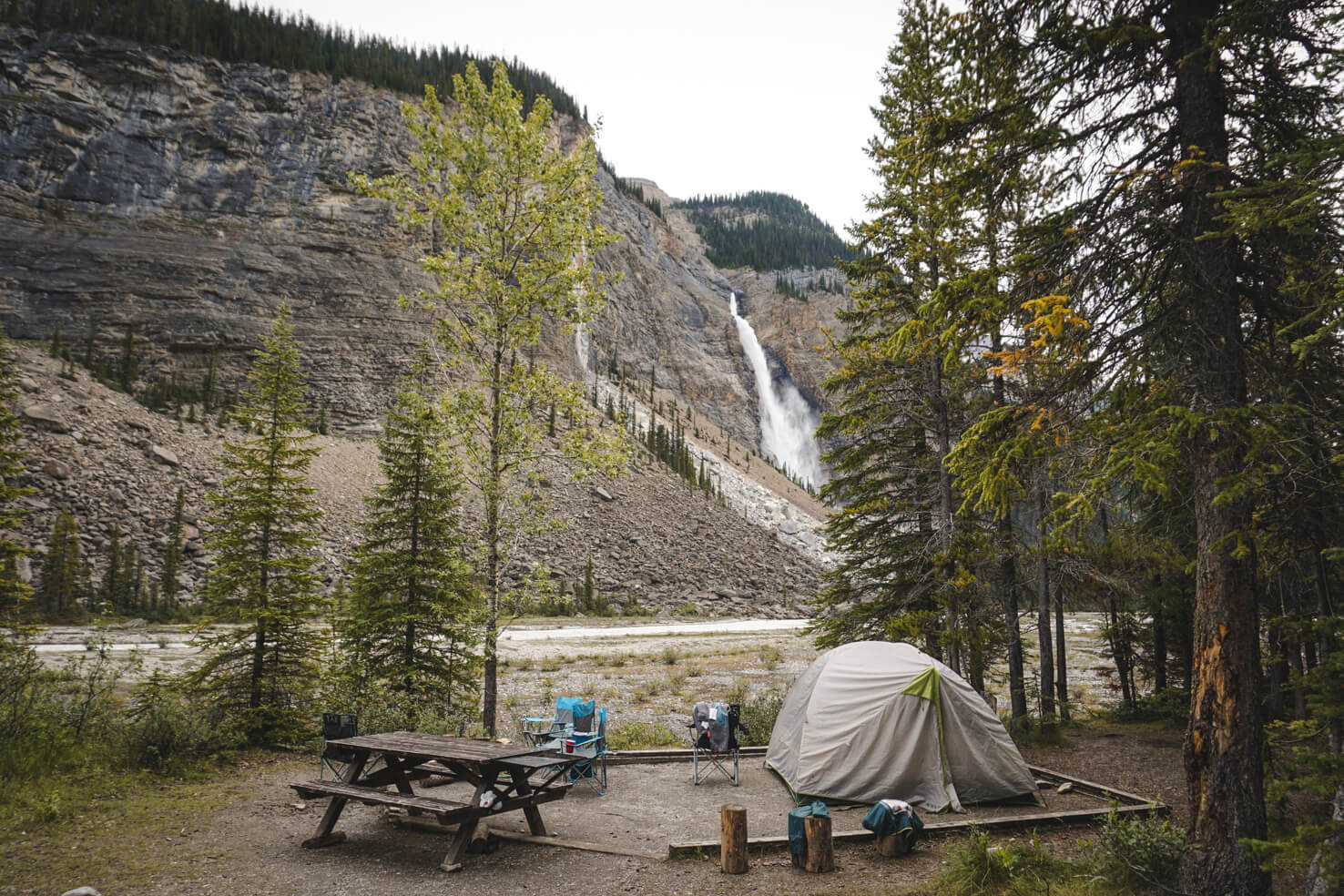
- Kicking Horse Campground
The Kicking Horse Campground is on Yoho Valley Road (on the way to Takakkaw Falls). Both reservable and first-come, first-serve sites are available. This scenic campground is open from May 18 to October 9 and offers sites by the river, in the forest or in a meadow. The campsite fee is 29.25 CAD/night, including hot showers and flush toilets.

- Monarch Campground
Monarch Campground is on Yoho Valley Road (on the way to Takakkaw Falls). It’s a basic campground open May 4 to September 18 for a fee of 18.75 CAD/night. Only first-come, first-serve sites are available. If you plan to camp here, I recommend getting a site first thing in the morning and then exploring. Because of its proximity to many attractions, it’s often full by the afternoon.

- Hoodoo Creek
Hoodoo Creek Campground is furthest from Takakkaw Falls and other Yoho attractions. It’s open from June 15 to September 4 for a fee of 18.75 CAD/night.
- A fire permit costs 9.50 CAD/day, and firewood is provided
- Online reservation, modification or cancellation costs 11.50 CAD
The best places to stay near Takakkaw Falls
Budget pick: HI Whiskey Jack Hostel near Takakkaw Falls is open from late June till September but is currently under construction.
Depending on which direction you’re travelling, you can choose from these options:
- The closest hostel is Dreamcatcher Hostel in downtown Golden offering a shared kitchen and the perfect location close to all amenities. Click here for reviews and the latest prices
- Another option is HI Lake Louise Alpine Centre Hostel with a shared kitchen, sauna, and the epic Lake Louise nearby. Click here for reviews and the latest prices
Value pick: Truffle Pigs Lodge
Truffle Pigs Lodge (our beloved bistro) also offers accommodation in Field. You can choose a single room, a queen room with a kitchenette, a double queen, and a family suite. All offer stunning mountain views!
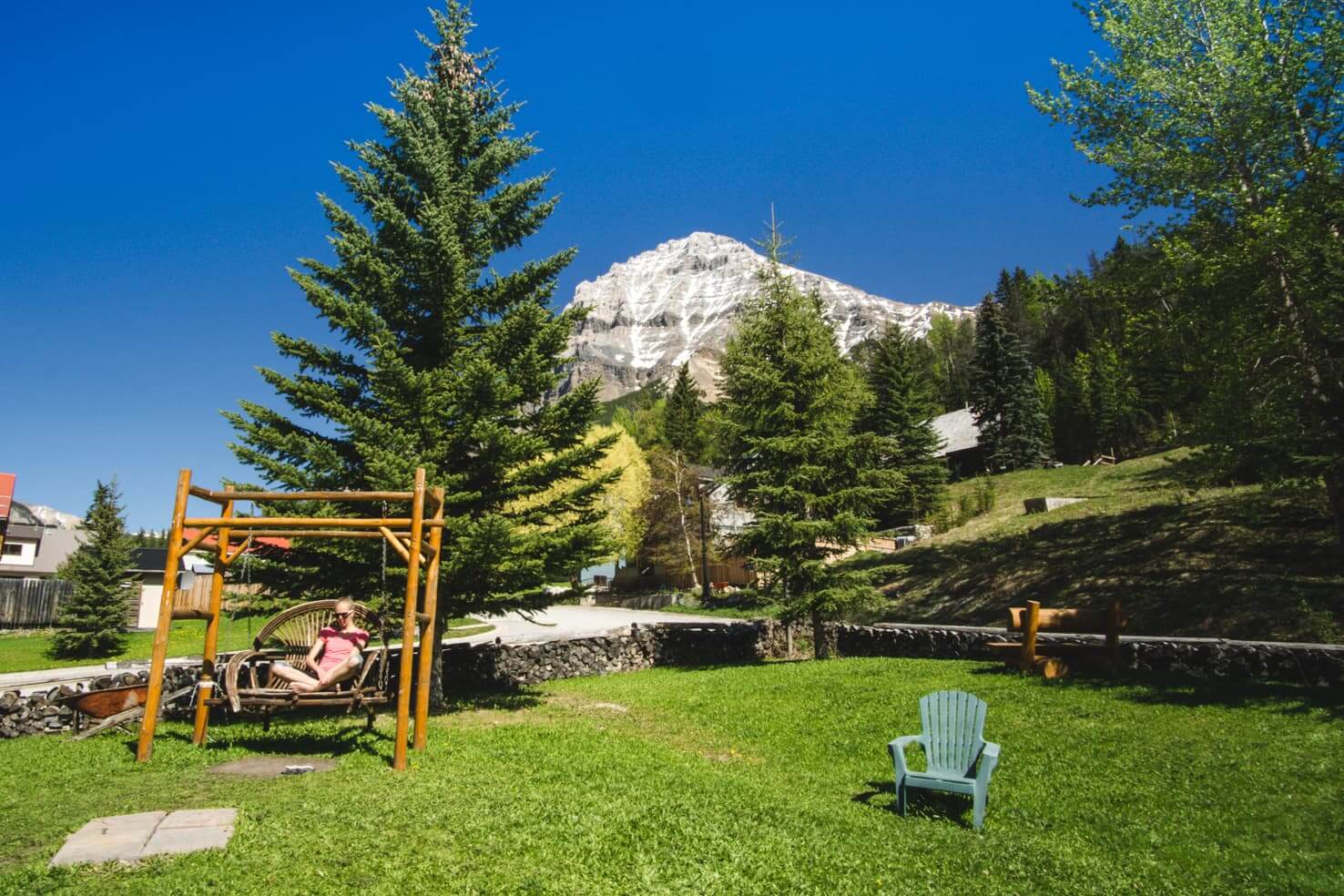
Luxury pick: Emerald Lake Lodge
Located on the gorgeous Emerald Lake shore, the lodge offers rooms with fireplaces, a private balcony, and the most stunning views.
Click here for reviews and the latest prices

Things to do near Takakkaw Falls
- Try canoeing, kayaking or stand-up paddle boarding on Emerald Lake (canoe rental is on the lakeshore and costs 90CAD/hour for three person canoe)
- Visit Natural Bridge – a year-round activity where you can see the tumbling and frozen waterfall in winter; it’s on the way to Emerald Lake
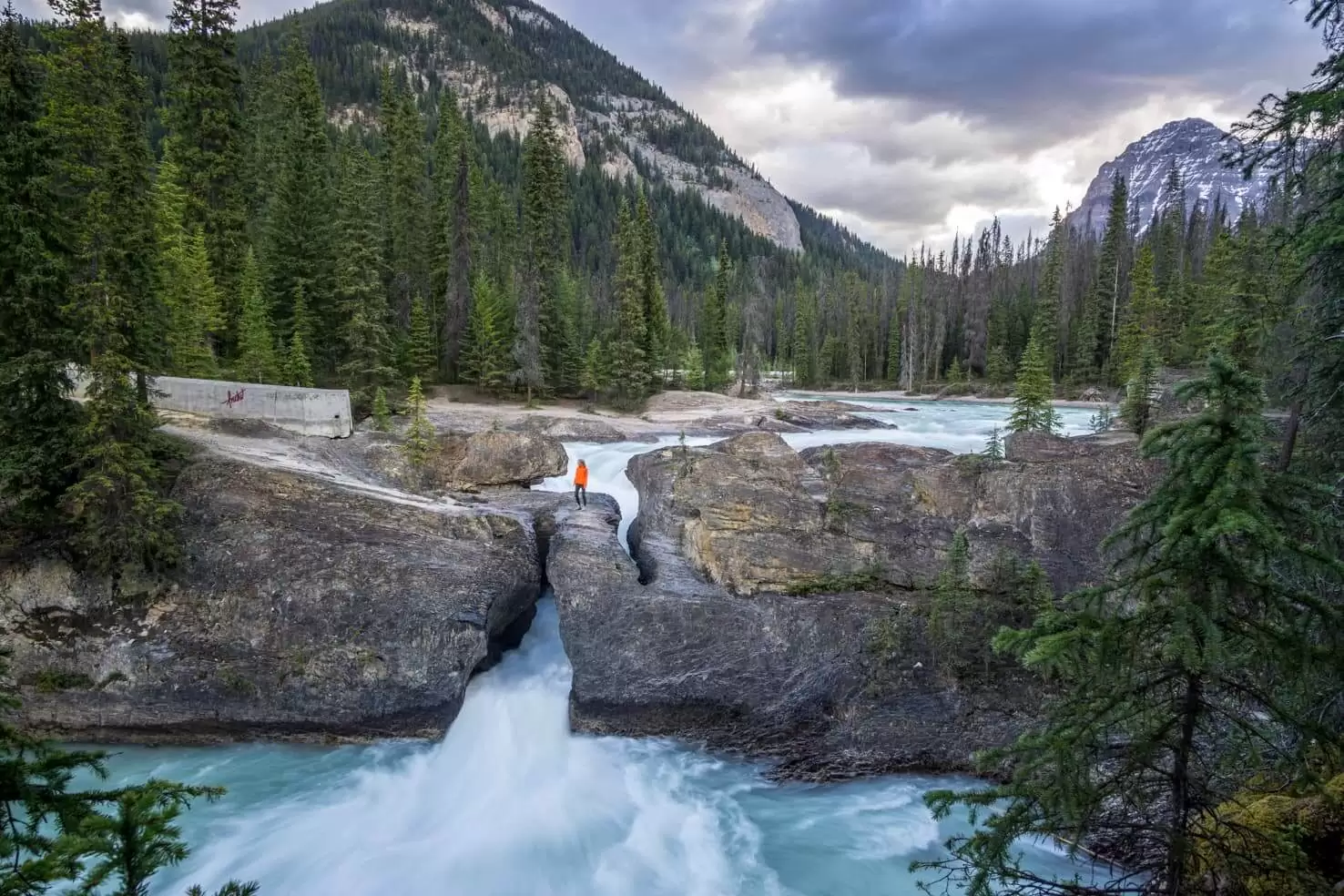
- See the Spiral Tunnel – the most difficult part of the Canadian Pacific Railway’s track, where trains climb 300m in the tunnel. The viewpoint is only accessible from mid-May to mid-October.
- Visit Kicking Horse Pass National Historic Site – learn about the background and importance of building the Spiral Tunnel
- Mountain or road biking – check the Parks Canada website for options
- Join a guided hike to Burgess Shale Fossil Beds – some of the oldest fossil beds in the world belong to UNESCO World Heritage Site
- See the confluence of the Yoho River and Kicking Horse River
- Hike to Laughing Falls – starting at Takakkaw Falls; this 8 km round-trip hike is easy with a stunning waterfall
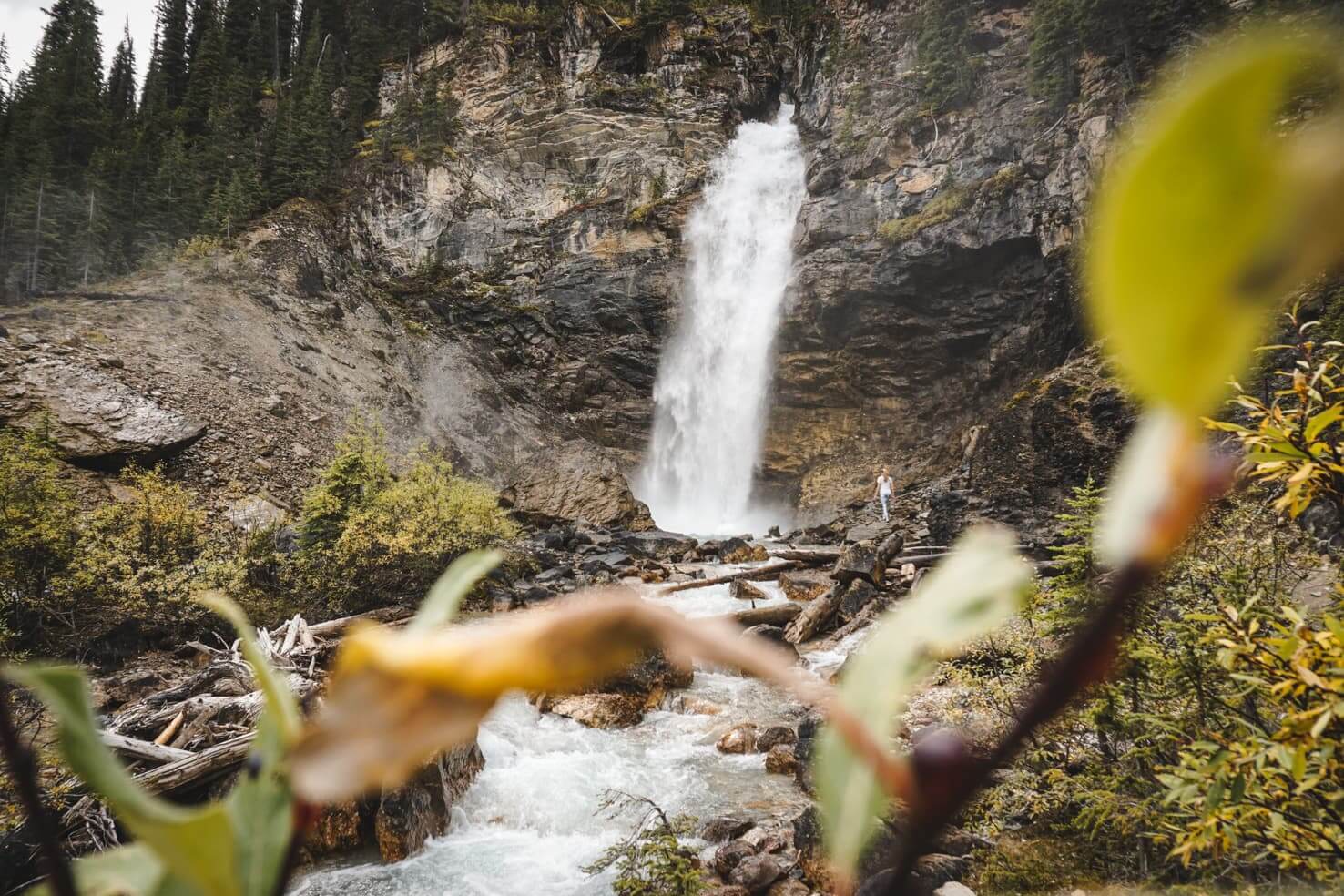
- Hike the Iceline Trail – 18 km challenging hike featuring views of Takakkaw Falls from above, up-close and distant glaciers, several other waterfalls and pristine lakes
- Hike to Sherbrooke Lake – a little-known gem in Yoho has a 6 km long trail with a breathtaking lake at the end
- Hike to Wapta Falls – a 5km easy hike to a waterfall to cool off
READ MORE
Best hikes in Yoho National Park
FAQ about Takakkaw Falls
When is the best time to visit Takakkaw Falls
Since Takakkaw Falls is fed by Daly Glacier, the most significant flow is when the glacier starts to melt – in June and July.
We also visited Takakkaw Falls in mid-September (pictured below) and still saw a hugely impressive waterfall. By October, the end of the season, the waterfall is smaller but still impressive. This is when you can get close to the waterfall without getting completely soaked.
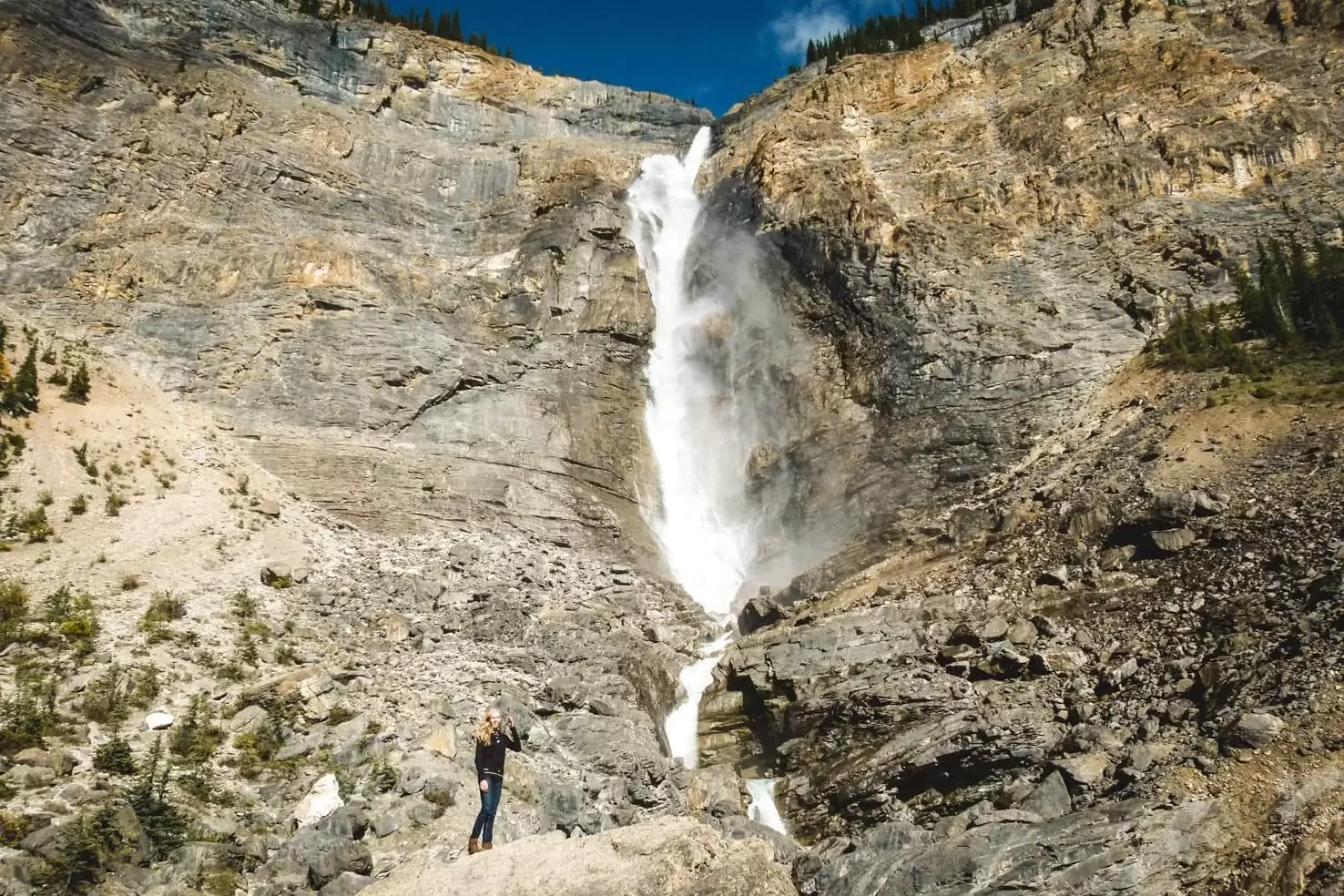
If you look left of the waterfalls, you might see rock climbers making their way up.
Yoho Valley Road, the only access to Takakkaw Falls, closes in mid-October (until June). The exact date changes slightly each year based on the snowfall. After the road closure, you can only access Takakkaw Falls on snowshoes or cross-country skis if you have avalanche training and proper gear.
Takakkaw Falls in winter
Because the road to Takakkaw Falls is closed in winter, you can only access the falls on snowshoes or cross-country skis.
If you want to attempt it, have avalanche gear and training as the road passes an avalanche zone. Takakkaw Falls freeze during winter, and determined climbers still visit and climb.
Where to next?
Golden
This small and charming mountain town offers lots of fun outdoor adventures. You can check out our 3-day Golden itinerary or 30 fun things to do in Golden.
My favourites are:
Banff National Park
If you’re continuing east to Banff National Park, check out our Adventure travel guide to Banff National Park for activities and tips for visiting.
Just a few stops you shouldn’t miss on your visit are:
- Lake Louise
- Moraine Lake
- Johnston Canyon Hike is open year-round with beautiful frozen waterfalls in winter
- Lake Minnewanka
Know before you go
National park entrance
When you enter any national park in Canada, you must pay an entrance fee. You have a choice of either a daily pass or a yearly pass.
- 10.50 CAD per person for a daily pass, 21 CAD for a group/family
- 72.25 CAD per person for a yearly pass, 145.25 CAD for a group/family
The yearly Discovery Pass is valid for all National Parks in Canada. You can purchase it at the gate when you enter the national park, in the Visitor’s Centre or online here.
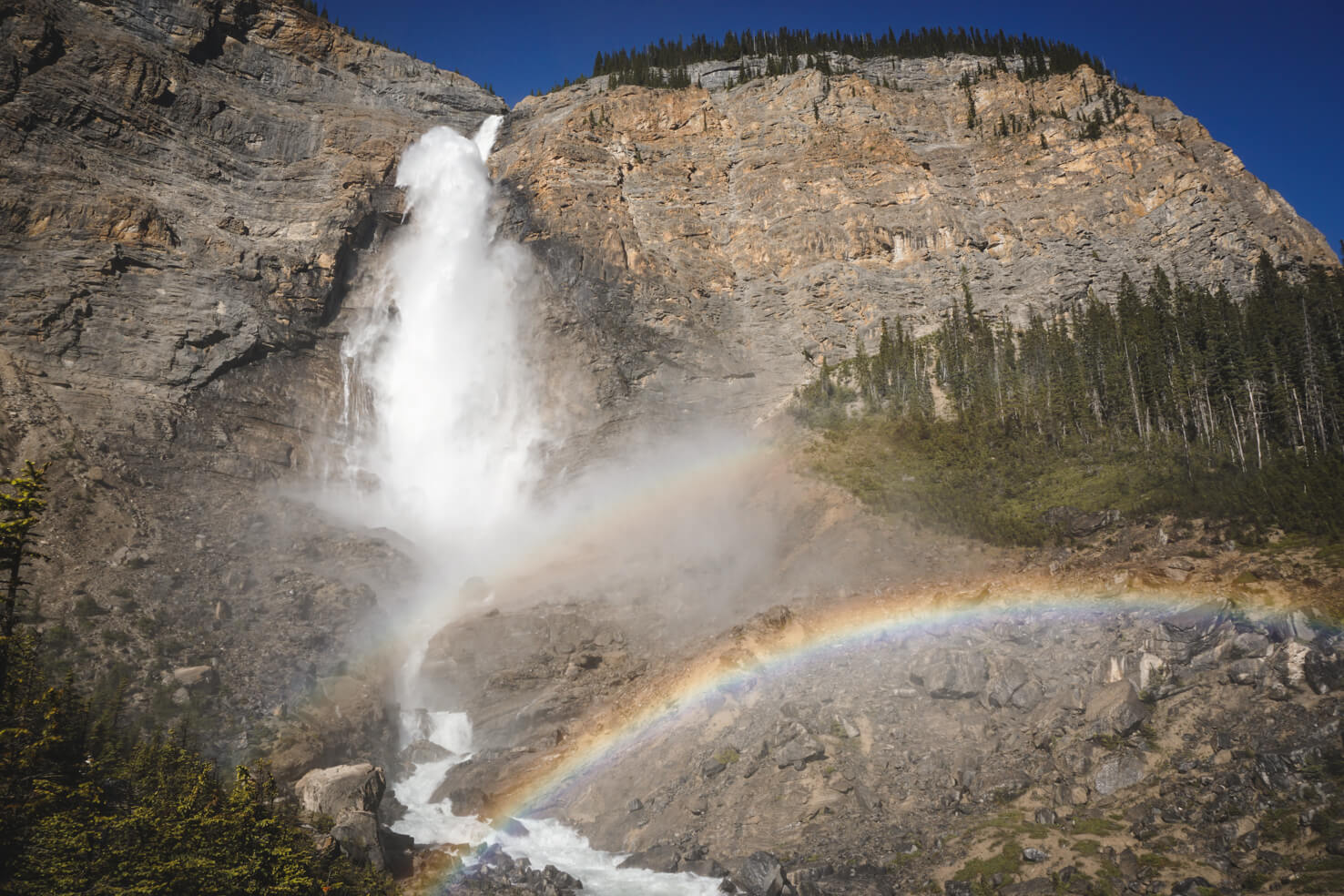
Hiking essentials for the Canadian Rockies
These are just a few of our hiking essentials. But we do carry a few more things. For the complete list or more details about any of these essentials, read our post Hiking packing list for summer in the mountains.
- Lifestraw bottle with filter (or Thermos if you’re visiting in winter)
You need to carry water in a reusable Nalgene bottle, which I find is the most lightweight bottle, or you need to take a filtration system. In this case, all you need is a bottle with a water filter and fill it up when you arrive at the waterfalls. We always carry LifeStraw bottles on our runs, hikes, and backpacking trips.
- Sunscreen
One of the best-rated sunscreens from EWG, which I use and highly recommend, is Thinksport and Attitude mineral sunscreen. Alternatively, you can pack a sunscreen stick to re-apply during the day without getting your hands messy.
- Repellent
I don’t like DEET repellent’s smell or skin stickiness, so I make my own. It’s been effectively tested in the Canadian backcountry and smells incredible!
My recipe for DIY repellent – combine 200 ml Witch hazel, 5 drops of Lemon essential oil, and 5 drops of Eucalyptus essential oil and pour it into a glass spray bottle. Shake well before each use and spray on your skin or clothes a few times a day.
Alternatively, you can buy biodegradable repellent.
- Bear spray
Bear Spray Repellent is an essential item in the Canadian Rockies. If you’re flying in, you cannot take it on an airplane, but it can be purchased in most outdoor stores or rented at your hotel. Make sure you know how to use it, and keep it close.
Despite popular belief, Parks Canada stated that bear bells are ineffective in deterring bears, and you should make noise while hiking to let bears know you’re there.
- Waterproof jacket
A windproof jacket is a must on any mountain trip. Double bonus if it’s waterproof with breathable fabric as well.
My jacket packs small as it’s from a light fabric, but it’s both windproof and waterproof. Because this shell jacket is an outer layer, you need a fleece or a down jacket for warm insulation.
- Fleece or down jacket
I like to use my comfy soft fleece in spring and autumn when I know I’ll wear it most of the day. When I need to pack a light and small insulating layer into my backpack (especially in summer), I like to use a down jacket that’s lighter than fleece, packs into a little pouch, and uses very little space in my backpack.
- Trail running shoes
My long-time favourite trail running/hiking shoe is Adidas Outdoor Kanadia. They have a waterproof membrane, excellent grip on rocks, and great foot support, and I use them year-round. Michal tried several trail shoes over the last few years, and his favourites for hiking are waterproof Salomon with a wider toe box.
Road closure in Yoho National Park
For trail closures due to wildlife presence or avalanche dangers in Yoho National Park, check out the report from Parks Canada.
Accurate road conditions for Alberta can be checked here and for British Columbia here.
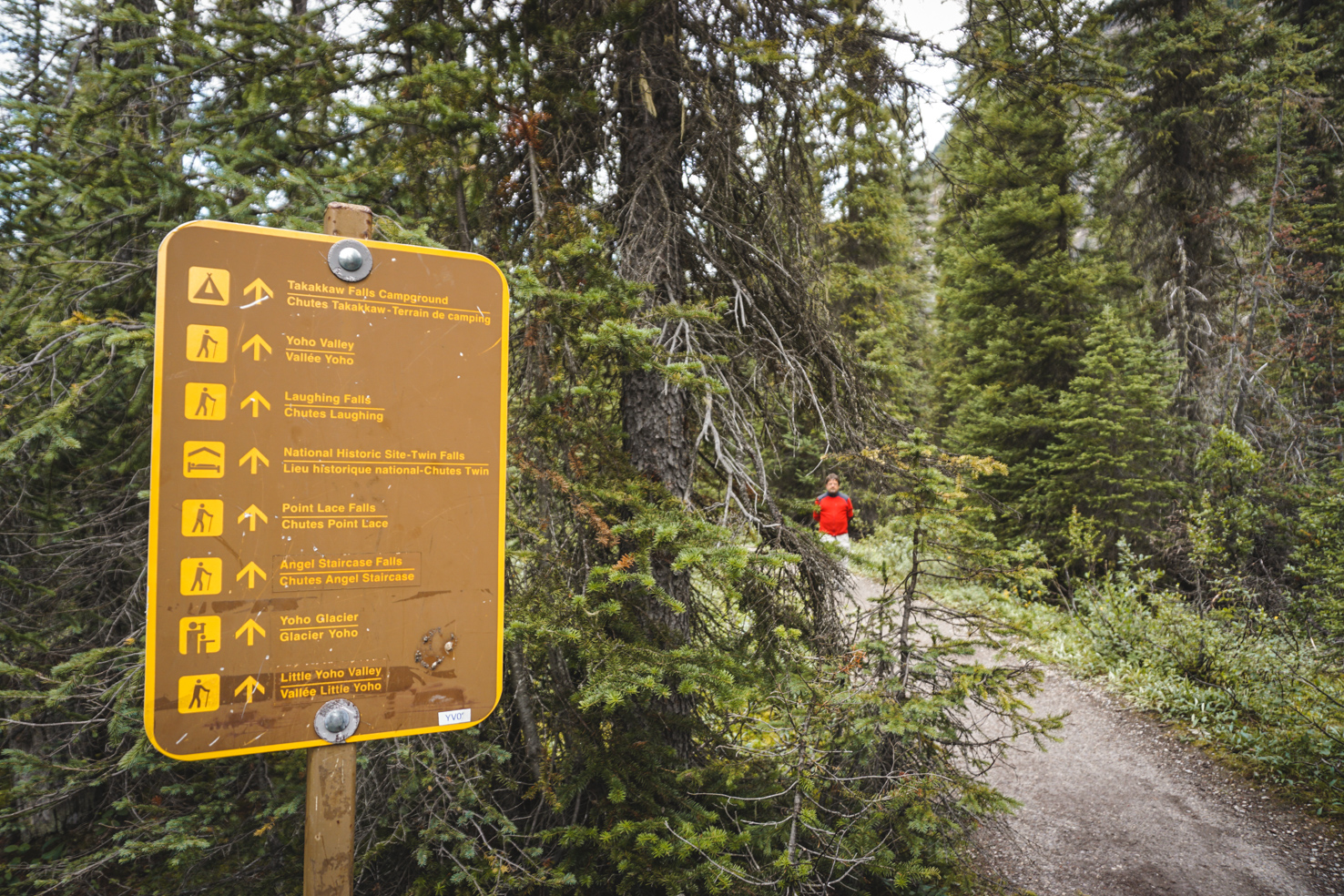
Trail report for Yoho National Park
Before you head out, check current trail conditions on Trail Report from Parks Canada.
Bear Country
As always, you are in a bear habitat in the Canadian Rockies. You should always carry a bear spray (can be purchased at Visitor’s Centre or outdoor stores), know when and how to use it and make noise while hiking and running (so you don’t surprise any bears)! Carefully read these instructions on how to behave around them.









